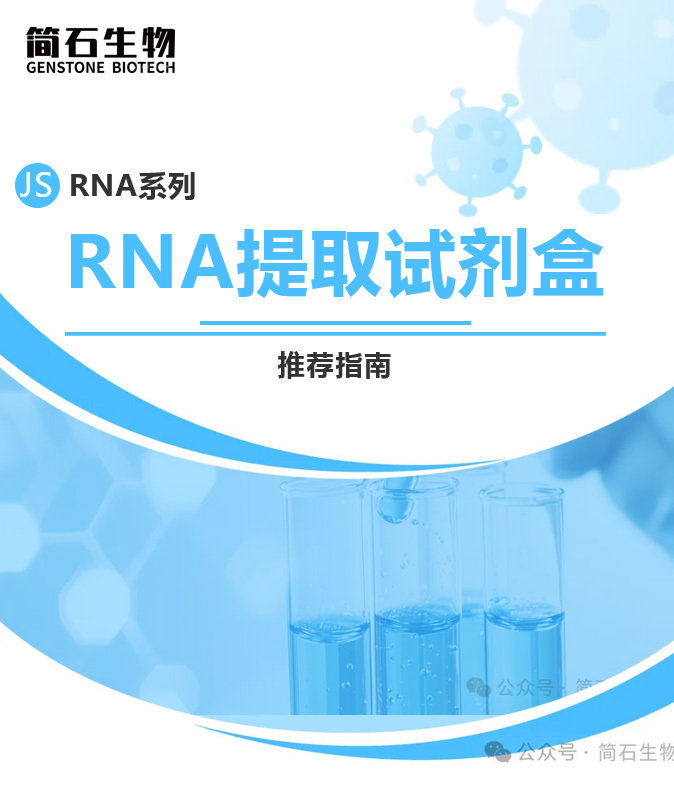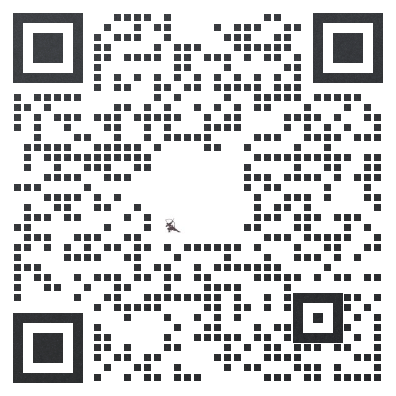How can RNA extraction kit be selected by experimental novices? Here's the information!
Published Time:
2024-10-22
If you are a newly hired laboratory technician, a laboratory novice, a newly enrolled graduate student, or a cross-disciplinary student interested in this field, then this article is for you. RNA extraction is a very basic yet extremely important step in molecular biology. Choosing the right RNA extraction kit can not only improve experimental efficiency but also ensure the smooth progress of subsequent experiments. Next, let's learn step by step how to choose a suitable RNA extraction kit.

If you are a newly hired laboratory technician, a laboratory novice, a newly enrolled graduate student, or a cross-disciplinary student interested in this field, then this article is for you. RNA extraction is a very basic yet extremely important step in molecular biology. Choosing the right RNA extraction kit can not only improve experimental efficiency but also ensure the smooth progress of subsequent experiments. Next, let's gradually understand how to choose a suitable RNA extraction kit.



The first step in RNA extraction is to clarify the type of sample to be extracted, which is crucial for choosing the right kit.
Common sample types include:
① Cell samples: including adherent cells and suspension cells. RNA extraction is relatively simple, but it is necessary to pay attention to whether special cell lines or cell culture medium components may interfere with the extraction effect.
② Tissue samples: RNA extraction from animal or plant tissues is more complex, especially for plant cells, due to the presence of cell walls, special lysis steps are required. Some animal tissues, such as liver and muscle tissues, contain abundant proteins and enzymes, which may affect the purity of RNA.
③ Blood samples: RNA content in blood is low and easily degraded by nucleases, so special attention should be paid to RNase inhibition. In addition, different kits are required for whole blood, serum, or plasma.
④ Virus samples: If viral RNA is extracted, a kit that can efficiently lyse the viral envelope should be selected. Some kits can directly extract RNA from viral suspensions.
For the special needs of these different samples, choosing an optimized kit can greatly improve the efficiency and recovery rate of RNA extraction. If the experiment involves multiple sample types, choosing a universal RNA extraction kit that is compatible with different samples is also a good choice.

Current RNA extraction methods are mainly divided into traditional phenol-chloroform methods and modern column extraction methods. Several factors should be considered when choosing a suitable technique:
Phenol-chloroform method (TRIzol method): This method relies on organic solvents such as phenol and chloroform for phase separation. It is a classic RNA extraction technique that can simultaneously extract DNA, RNA, and proteins. It is suitable for high-quality, high-recovery RNA extraction, especially effective in samples with low total RNA content. However, the chemical reagents used in this method are toxic and require extra care during handling.
Column method: The column extraction method is based on the adsorption of silica membranes or centrifuge columns, separating RNA from other impurities. Its advantages are simple, fast operation and no need to use organic solvents, suitable for high-throughput laboratory use. However, its RNA recovery rate is slightly lower than that of the phenol-chloroform method, and it may have certain limitations in dealing with complex samples (such as high-fat or protein-rich tissues).
The choice needs to balance the simplicity of operation, extraction efficiency, RNA purity, and laboratory safety. If you are a novice, the column method may be a more suitable choice due to fewer steps and higher safety.

The workload and equipment configuration of the laboratory will greatly affect the choice of RNA extraction process:
Manual extraction: Suitable for small-scale experiments or RNA extraction of specific samples. The advantage of manual operation is that the equipment requirements are low and the cost is low, suitable for beginners or temporary experimental projects. During manual extraction, the experimental personnel's operating skills and experience are very important. Especially in multiple steps involving pipetting and sample washing, any mistakes may lead to sample loss or contamination.
Automated extraction: For laboratories that need to perform high-throughput experiments, automated systems are a more efficient choice. Automated RNA extraction platforms can reduce errors caused by manual operation, while improving the reproducibility and consistency of experiments. These systems usually come with dedicated automated reagent kits. Although the initial investment is high, in the long run, it can save a lot of time and labor costs. It should be noted that when choosing an automated extraction kit, it must be ensured that the kit is compatible with the automated equipment already available in your laboratory.

RNA extraction kits usually contain various reagents and consumables, such as lysis buffer, washing buffer, and elution buffer. When choosing a kit, in addition to paying attention to these basic components, you should also consider whether other functional components are needed:
Lysis buffer: This is one of the most important components in the kit. For plant cells, animal tissues, or other difficult-to-lyse samples, it may be necessary to choose a kit containing strong lysis components (such as detergents).
DNase digestion step: Some RNA extraction kits contain DNase, which can remove DNA contamination from the sample. This is crucial for downstream experiments requiring high RNA purity (such as qPCR or transcriptome sequencing).
RNA stabilizer: Some kits provide RNA stabilizers to prevent the degradation of extracted RNA, especially for easily degradable samples or experiments that need to be stored for a long time.
According to the specific experimental needs, choosing a kit with corresponding additional components can ensure higher extraction quality and data reliability.

During the use of RNA extraction kits, specific equipment support may be required, Common equipment includes:
Centrifuge: Most RNA extraction processes require high-speed centrifugation. If the laboratory does not have a suitable centrifuge, or the centrifuge cannot reach the speed and capacity required by the kit, it may affect the extraction effect.
Automated extraction platform: For automated extraction, it must be ensured that the kit is compatible with the laboratory's existing extraction platform. Different brands of automated platforms may require different types of consumables, such as specific extraction columns or plates.
Pipettors and consumables: Manual extraction usually requires multiple pipetting operations, so high-quality pipettors and RNase-free tips are essential consumables to prevent RNA from being contaminated during extraction.
When purchasing a kit, be sure to understand in advance whether the existing laboratory equipment can meet the needs, to avoid situations where it cannot be used or the extraction effect is not ideal.

Choosing the right RNA extraction kit isn't difficult; the key is to clearly define your experimental needs and understand the kit's technical principles and scope of application. Whether you're a lab novice or an experienced researcher, mastering these steps will help you choose the right RNA extraction kit! Next, I will recommend some imported and domestic kits to facilitate your selection.
1. Imported Reagent Kits
There are many high-quality imported RNA extraction kits on the market, suitable for researchers with high requirements for high recovery rate and low contamination. These kits usually have a good reputation and mature technology. For example, Zymo Research, Qiagen, and Thermo. Today we will mainly discuss Zymo Research's RNA extraction kits.
[R1050]
Zymo Research Quick-RNA™ Miniprep Plus Kit
Features: Applicable Sample Types: Widely applicable to various samples such as cells, tissues, blood, and viruses.
Extraction Method: Uses column extraction method, utilizing silica membrane for efficient RNA separation and reduced contamination.
Recovery Rate and Purity: Provides ≥90% RNA recovery rate, high RNA purity, with an OD260/OD280 ratio typically between 1.8 and 2.2, suitable for downstream applications.
DNase Treatment: Optional DNase digestion step to remove DNA contamination and improve RNA purity.
Advantages
① Easy Operation: Clear steps, easy to learn, suitable for beginners and high-throughput experiments.
② High Efficiency: Effectively removes impurities from complex samples (such as tissues or blood) to obtain high-quality RNA.
③ Compatibility: Suitable for various downstream applications, including qPCR, RNA sequencing, and gene expression analysis.
[R2050]
Zymo Research Direct-zol™ RNA Miniprep Kit
Features:
Applicable Sample Types: Similarly applicable to various sample types, especially cells and tissues.
Extraction Method: It uses a similar column extraction method; the design may have been optimized in certain steps.
Recovery Rate and Purity: The recovery rate and purity are also relatively high, suitable for various molecular biology experiments.
Advantages:
Optimized Design: May be optimized for specific sample types, such as certain difficult-to-lyse cells or tissues, effectively improving RNA recovery.
Fast and Convenient: Easy to operate, suitable for quick extraction and analysis.
[Recommendation]
R2050: If your experiment involves complex samples (such as tissues, blood) and requires high RNA purity and recovery rate, R2050 is an excellent choice. Its high efficiency and ease of operation are very suitable for laboratories that need frequent RNA extraction, especially when performing downstream analysis such as RNA sequencing and qPCR.
R1050: If your experiment mainly involves cell samples and your budget is relatively limited, R1050 can meet most needs. Its optimized design makes it perform better when handling certain specific samples while still providing sufficient RNA quality for routine analysis.
2. Domestic Reagent Kits
In recent years, the quality of domestic RNA extraction kits has steadily improved, and they have a price advantage. For laboratories or teaching experiments with limited budgets, domestic kits are a very cost-effective choice. Common domestic brands include:
[TR205] Small-Scale Total RNA Extraction Kit
Product Characteristics:
① Applicable Sample Types: TR205 can extract RNA from various sample types, including: cells (such as cultured mammalian cells), tissues (such as liver, muscle, etc.), yeast, plants, bacteria, biological fluids (such as serum, plasma)
② Extraction Method: Uses a column extraction method, simplifying traditional phase separation steps; chloroform or isopropanol precipitation is not required. The entire extraction process takes only about 10 minutes.
③ RNA Purity: This kit effectively removes DNA contamination, eliminating the need for additional DNase treatment. The extracted RNA is of high purity and is suitable for sensitive downstream applications such as RT-qPCR, gene expression analysis, and RNA sequencing.
Advantages:
① High Efficiency: Compared to the traditional Trizol method, TR205 significantly shortens the operating time and reduces the use of toxic reagents.
② High Flexibility: Applicable to various sample types; the laboratory can process RNA samples from different sources without using different kits.
③ Easy Operation: Does not require complex separation steps, especially suitable for laboratories that need simplified operation steps or novice experimenters.
Applicable Scenarios:
If your experiment involves a wide range of sample sources (such as cells, tissues, plants, etc.) and you need a high-efficiency, rapid, and high-purity RNA extraction solution, TR205 is an excellent choice. Its flexibility and simplified workflow will significantly improve work efficiency, especially in diverse laboratories.
[TR150] Micro Total RNA Rapid Extraction Kit
Product Characteristics:
① Applicable Sample Types: TR150 is specially designed for handling micro-samples, suitable for extracting RNA from very small amounts of samples, including: single cells (even as few as 1 cell), small amounts of tissue (such as very small tissue sections), yeast, plants, bacteria, etc.
② Extraction Method: It also uses a column extraction method; phase separation or toxic reagents are not required, ensuring rapid RNA extraction. TR150 particularly emphasizes the ability to extract small RNAs (such as microRNA), which is very important for experiments involving non-coding RNA research.
③ RNA Purity: TR150 can efficiently extract high-purity RNA free of genomic DNA from very small amounts of samples. The extracted RNA is also suitable for high-sensitivity experiments such as RT-qPCR and high-throughput sequencing.
Advantages:
① Extremely High Sensitivity: It can extract high-quality RNA from very small samples, suitable for experiments involving rare or minute samples.
② Outstanding small RNA Extraction Capability: This kit is particularly effective in recovering small RNA, suitable for experiments studying miRNAs and other non-coding RNAs.
③ Efficient and Convenient: Like TR205, this kit does not require complex separation steps, simplifying the operation process.
Applicable Scenarios:
TR150 is very suitable for experiments studying rare samples (such as single-cell analysis) or those with special needs for small RNA. For laboratories conducting research on non-coding RNA (such as miRNA) or handling extremely small samples, this kit provides flexibility and efficiency, ensuring sufficient RNA extraction from minute samples for downstream analysis.
Summary: [TR205] is suitable for most routine RNA extraction experiments, especially for laboratories involving multiple sample types and requiring high-purity, high-efficiency RNA extraction. [TR150] is particularly suitable for the extraction of minute samples, especially for experiments with very small amounts of RNA or requiring the extraction of small RNA, making it an ideal choice for single-cell experiments or miRNA research.
The choice of kit depends on your experimental needs. If you have a large number of samples of various types, TR205 is recommended. If you are handling minute samples, especially experiments requiring small RNA, TR150 is recommended.
Related News

Order Consultation: Hu Manager


Order Consultation: An Manager


End-user Scientific Research Customer Order Consultation


Technical Consultation: Bai Technical


Customer Service


Douyin


WeChat Video Account


Kuaishou

Contact Us
Jianshi Biotechnology (Beijing) Co., Ltd.
Company Address: Room 401, Building 11, No. 12 Courtyard, Juyuan Middle Road, Mapo Town, Shunyi District, Beijing
Phone: 86 010-58235289
E-mail: mzhao@jianshibio.com
Jianshi Biotechnology (Zhejiang) Co., Ltd.
Address: Building 11, No. 36 Xingshun Road, Zhongyi Ningbo Eco-park, Yuyao City, Zhejiang Province
Phone: 86 18611610761
Leave a Message
If you are interested in our products, please leave your phone number.
Consult Now →Product Subscription
Subscribe to us to stay informed about product updates and special offers

